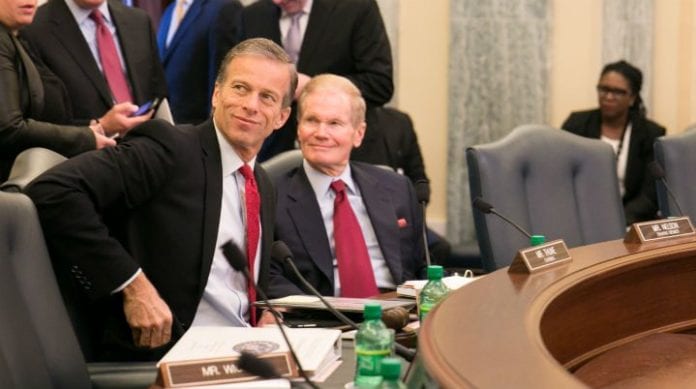Recently approved Mobile Now Act targets sub-6 GHz bands, feasibility of millimeter-wave spectrum
The federal government’s push to free up additional spectrum resources and for the commercial telecom space and meet a presidential mandate received a boost late last week as a Senate committee approved the Mobile Now Act.
In approving the act, the Senate Committee on Commerce, Science and Transportation tasked the Federal Communications Commission and National Telecommunications and Information Administration with seeking out 255 megahertz of new spectrum resources below the 6 GHz band for use by the commercial telecom industry by the end of 2020. That work is to include looking at spectrum between 3.1-3.5 GHz and 3.7-4.2 GHz bands, with a focus on relocation efforts as opposed to potential spectrum sharing.
The act does not include the potentially more than 100 megahertz of spectrum set to be auctioned as part of the FCC’s upcoming 600 MHz incentive auction proceeding, which is scheduled to begin later this month, but does reference the “incentive” part of the proceedings as a potential template for unleashing new spectrum resources for the commercial cellular market. The act also notes the 255-megahertz mandate does not include the 65 megahertz auctioned as part of last year’s record-breaking AWS-3 proceedings or the 150 megahertz of spectrum recently set aside for shared use in the 3.5-3.6 GHz bands.
The act also calls for movement on figuring out the feasibility of using spectrum in the various high spectrum bands, including the 24 GHz, 25 GHz, 32 GHz, 70 GHz and 80 GHz bands for licensed, unlicensed or a combination of uses.
In approving the act, the committee cited the need to supply spectrum resources in support of the telecom market’s push towards so-called “5G” technologies.
“The committee’s advancement of the Mobile Now Act was truly a bipartisan effort,” said committee chairman John Thune (R-S.D.). “Enactment of this legislation will pave the way to a 5G future where Americans have access to ultra-fast, next-generation wireless technology.”
President Barak Obama in 2010 issued a memorandum directing NTIA and the FCC to free up 500 megahertz of spectrum for commercial cellular use. The government has so far failed to reach half of that amount, though the 600 MHz incentive auction could boost those efforts.
Speaking last week in front of the Senate Committee on Commerce, Science and Transportation, FCC Chairman Tom Wheeler threw his support behind the Mobile Now initiative, noting similarities to the FCC’s Spectrum Frontiers rulemaking.
“Fundamentally, we’re approaching 5G as we have with previous generations of wireless by adopting a flexible use policy and assuring that spectrum is available to be deployed when the private sector has arrived at the requisite technical standards and network architectures,” Wheeler said in his opening statement. “This approach made us successful as global leaders in 4G LTE. At this point, none of us knows exactly what 5G will be, but we can be certain that the spectrum requirements will be dynamic and ever changing. Accordingly, our spectrum policy must be equally dynamic to address a wireless reality that is still evolving. We must continue to employ flexible use policies and reliance on private-sector innovation and investment, while increasing our commitment to spectrum sharing, opening new bands for broadband, and smart approaches to wireless infrastructure.”
Bored? Why not follow me on Twitter

